文章
Miss Chen
2018年05月20日

Description: This perennial wildflower is about 1-2' tall and similarly across. It has a single erect stem that is hairless and unbranched; the stem terminates in a whorl of about 3 compound leaves. Each compound leaf is palmate with 5 widely spreading leaflets; the petiole (basal stalk) of each compound leaf is 2-5" long. Individual leaflets are 2½–6" long and ¾–2½" across; they are ovate to obovate, medium green, hairless, and finely serrated along their margins. The lower pair of leaflets are smaller in size than the other leaflets. The larger leaflets have longer petiolules (basal stalklets) than the smaller leaflets, and they have short slender tips.
From the terminal point of the central stem, there develops a single umbel of greenish white flowers. There are about 10-20 flowers per umbel; each umbel is about ½–¾" across. Individual flowers are only 1/8" (3 mm.) across; each flower has 5 spreading petals, a short tubular calyx, 5 stamens, and a pistil. The calyx has 5 tiny teeth. The blooming period occurs from early to mid-summer and lasts about 2 weeks. During the fall, fertile flowers are replaced by a small cluster of bright red berries spanning about ¾" across. Each berry is globoid-ovoid in shape and contains about 2 seeds. The root system consists of a fleshy taproot that is fusiform in shape (widest in the middle and tapering at both ends); this taproot can be several inches long. American Ginseng reproduces by reseeding itself.
Cultivation: The preference is medium to light shade, a rich loamy soil with abundant organic material, and mesic conditions.
Range & Habitat: The native American Ginseng is distributed throughout Illinois, but it is relatively uncommon. Populations have declined because of habitat destruction and overcollection of the fleshy roots. This wildflower is found mesic deciduous woodlands. Usually, such woodlands are high quality and little-disturbed.
Faunal Associations: Very little is known about floral-faunal relationships for this species. Probably small bees and various flies visit the flowers for nectar or pollen. The red berries are probably eaten to a limited extent by woodland birds that either nest or search for food on the ground; small rodents may eat the berries as well.
Photographic Location: Spitzler Woods Nature Preserve in Macon County, Illinois. This preserve contains a high quality deciduous woodland. The photograph was taken during the autumn, when the berries become mature.
Comments: It is unfortunate that this classic woodland wildflower has become uncommon. American Ginseng is a member of a small group of plants in the Araliaceae; these consist primarily of woodland wildflowers in Illinois. Another woodland wildflower that does not occur within the state, Panax trifolius (Dwarf Ginseng), is found further to the east. Dwarf Ginseng is smaller in size (about 6" tall) than American Ginseng, and its compound leaves are trifoliate, rather than palmate with 5 leaflets. The flowers and berries of these two species are similar to each other.
From the terminal point of the central stem, there develops a single umbel of greenish white flowers. There are about 10-20 flowers per umbel; each umbel is about ½–¾" across. Individual flowers are only 1/8" (3 mm.) across; each flower has 5 spreading petals, a short tubular calyx, 5 stamens, and a pistil. The calyx has 5 tiny teeth. The blooming period occurs from early to mid-summer and lasts about 2 weeks. During the fall, fertile flowers are replaced by a small cluster of bright red berries spanning about ¾" across. Each berry is globoid-ovoid in shape and contains about 2 seeds. The root system consists of a fleshy taproot that is fusiform in shape (widest in the middle and tapering at both ends); this taproot can be several inches long. American Ginseng reproduces by reseeding itself.
Cultivation: The preference is medium to light shade, a rich loamy soil with abundant organic material, and mesic conditions.
Range & Habitat: The native American Ginseng is distributed throughout Illinois, but it is relatively uncommon. Populations have declined because of habitat destruction and overcollection of the fleshy roots. This wildflower is found mesic deciduous woodlands. Usually, such woodlands are high quality and little-disturbed.
Faunal Associations: Very little is known about floral-faunal relationships for this species. Probably small bees and various flies visit the flowers for nectar or pollen. The red berries are probably eaten to a limited extent by woodland birds that either nest or search for food on the ground; small rodents may eat the berries as well.
Photographic Location: Spitzler Woods Nature Preserve in Macon County, Illinois. This preserve contains a high quality deciduous woodland. The photograph was taken during the autumn, when the berries become mature.
Comments: It is unfortunate that this classic woodland wildflower has become uncommon. American Ginseng is a member of a small group of plants in the Araliaceae; these consist primarily of woodland wildflowers in Illinois. Another woodland wildflower that does not occur within the state, Panax trifolius (Dwarf Ginseng), is found further to the east. Dwarf Ginseng is smaller in size (about 6" tall) than American Ginseng, and its compound leaves are trifoliate, rather than palmate with 5 leaflets. The flowers and berries of these two species are similar to each other.
0
0
文章
权问薇
2018年05月20日


一、养殖环境
1、土壤:要使用排水性良好的沙质土壤,尽可能不要使用黏重、透气性不好的土壤。
2、温度:夏季温度控制在18-22℃最佳,冬季朱顶红处于休眠的状态,温度不要低于5℃。
3、光照:朱顶红喜欢在阳光充足的环境生长,不能长时间接受阳光直晒,最好是将它放在通风好、明亮且没有强光直射的窗口。
4、浇水:浇水的时候要透彻,浇水量不要过多,以免出现积水影响其生长。

二、繁殖方法
1、播种繁殖:种子成熟之后就可以播种,一般在18-20℃发芽比较快,幼苗在移栽的时候要小心,不要伤害到根部,播种留经二次移植后就可以装进小盆了。
2、扦插繁殖:将它的母球纵切成很多份,然后再分切它的鳞片,将其斜着插在基质中,等到长出真叶时进行定植。

三、常见病害
1、斑点病:会危害到叶子、花朵及鳞茎,病变位置会出现圆形的斑点,在发病后及时将病叶摘除,同时配合喷洒多菌灵杀菌。
2、病毒病:发病后会导致叶子变黄甚至腐烂,甚至是整株死亡,发病时及时将病变的叶子、鳞茎腐烂部位剪掉,用温水浸泡3小时左右就可以轻松防治。

0
0
文章
Miss Chen
2018年05月19日

Description: This herbaceous perennial plant is about 1-2½' tall, branching occasionally. The stems are light green to reddish purple, terete, and glabrous (var. longistylis) to hairy (var. villicaulis). The alternate leaves are ternately compound; the lower compound leaves are up to 9" long and 9" across, while the upper compound leaves are much smaller in size. Each compound leaf is divided into 3 compound leaflets; the terminal compound leaflet is the largest. Each compound leaflet is further divided into 3 subleaflets; the terminal subleaflet is the largest, sometimes appearing to be divided into 3 even smaller subleaflets. The subleaflets are 1-4" long, ½-1½" across, and lanceolate to oval-ovate shape in shape; their margins are coarsely serrated-crenate or shallowly cleft. The upper subleaflet surface is yellowish green to green and nearly glabrous (var. longistylis) to moderately covered with appressed hairs (var. villicaulis).
The petioles of compound leaves are light green to reddish purple and up to 6" in length. The petiolules of leaflets are light green to reddish green and up to 2" long, while those of subleaflets are nearly sessile to ¼" (6 mm.) long. The foliage of this plant releases a mild anise fragrance when it is rubbed. The upper stems terminate in compound umbels of white flowers about 1½-3" across. There are about 3-6 umbellets per compound umbel on rays (floral stalks) up to 2" long. An umbellet has 7-16 flowers that are clustered together on rays (floral stalklets) up to ¼" (6 mm.) long. Each flower (about 3 mm. across) has 5 white petals with incurved tips, 5 white stamens, a pistil with a divided white style (stylopodium), and an insignificant calyx that is light green. At the base of each compound umbel, there are several linear-lanceolate bracts with ciliate margins; they are up to 8 mm. in length. At the base of each umbellet, there are several linear-lanceolate bractlets with ciliate margins; they are also up to 8 mm. in length.

The blooming period occurs during the late spring or early summer, lasting about 2-3 weeks. Afterwards, the flowers are replaced by 2-seeded fruits (schizocarps). While these fruits are still immature, the persistent divided style is 2.0-3.5 mm. in length (it is smaller than this when the flowers are still in bloom). The small seeds are narrowly ellipsoid-oblanceoloid, 5-ribbed, and slightly bristly along their ribs. The root system consists of a cluster of fleshy roots with a strong anise fragrance.
Cultivation: The preference is dappled sunlight to moderate shade, moist to mesic conditions, and rich loamy soil with decaying organic matter. In a garden situation, this plant will probably thrive in a sheltered area underneath a deciduous tree.

Range & Habitat: The native Aniseroot occurs in most counties of central and northern Illinois, where it is occasional to locally common; in southern Illinois, it is uncommon or absent (see Distribution Map). This map combines information for both varieties of Aniseroot; the typical variety is slightly more common than the hairy variety (var. villicaulis). Habitats include moist to mesic deciduous woodlands and gentle slopes of wooded ravines, where a variety of deciduous trees are dominant. Aniseroot can be found in average to high quality natural areas.

Faunal Associations: The nectar and pollen of the flowers attract small to medium-sized bees, wasps, beetles, and flies, including cuckoo bees (Nomada spp.), mason bees (Osmia spp.), Halictid bees (Agapostemon spp., Augochloropsis spp., Halictus spp., Lasioglossum spp.), masked bees (Hylaeus spp.), Syrphid flies, bee flies (Bombyliidae), dance flies (Empis spp.), Tachinid flies, and Anthomyiid flies. The caterpillars of the butterfly Papilio polyxenes asturias (Black Swallowtail) feed on the foliage. The slightly bristly seeds may cling to the fur of mammals, the feathers of birds, and the clothing of humans to some extent, dispersing them to new locations.
Photographic Location: A mesic deciduous woodland at Busey Woods in Urbana, Illinois.

Comments: Aniseroot (Osmorhiza longistylis) can be distinguished from many similar species in the Carrot family by the anise fragance of its foliage and roots. This species closely resembles Sweet Cicely (Osmorhiza claytonii) and they are often confused with each other. However, Sweet Cicely has only 4-7 flowers per umbellet, while Aniseroot has 7-16 flowers per umbellet. While the fruits of these two species are still immature, the persistent styles of Sweet Cicely are 1.0-2.0 mm. in length, while the persistent styles of Aniseroot are 2.0-3.5 mm. in length. The foliage and roots of Aniseroot have a stronger anise scent than those of Sweet Cicely, and its root can be used as a substitute for black licorice.
The petioles of compound leaves are light green to reddish purple and up to 6" in length. The petiolules of leaflets are light green to reddish green and up to 2" long, while those of subleaflets are nearly sessile to ¼" (6 mm.) long. The foliage of this plant releases a mild anise fragrance when it is rubbed. The upper stems terminate in compound umbels of white flowers about 1½-3" across. There are about 3-6 umbellets per compound umbel on rays (floral stalks) up to 2" long. An umbellet has 7-16 flowers that are clustered together on rays (floral stalklets) up to ¼" (6 mm.) long. Each flower (about 3 mm. across) has 5 white petals with incurved tips, 5 white stamens, a pistil with a divided white style (stylopodium), and an insignificant calyx that is light green. At the base of each compound umbel, there are several linear-lanceolate bracts with ciliate margins; they are up to 8 mm. in length. At the base of each umbellet, there are several linear-lanceolate bractlets with ciliate margins; they are also up to 8 mm. in length.

The blooming period occurs during the late spring or early summer, lasting about 2-3 weeks. Afterwards, the flowers are replaced by 2-seeded fruits (schizocarps). While these fruits are still immature, the persistent divided style is 2.0-3.5 mm. in length (it is smaller than this when the flowers are still in bloom). The small seeds are narrowly ellipsoid-oblanceoloid, 5-ribbed, and slightly bristly along their ribs. The root system consists of a cluster of fleshy roots with a strong anise fragrance.
Cultivation: The preference is dappled sunlight to moderate shade, moist to mesic conditions, and rich loamy soil with decaying organic matter. In a garden situation, this plant will probably thrive in a sheltered area underneath a deciduous tree.

Range & Habitat: The native Aniseroot occurs in most counties of central and northern Illinois, where it is occasional to locally common; in southern Illinois, it is uncommon or absent (see Distribution Map). This map combines information for both varieties of Aniseroot; the typical variety is slightly more common than the hairy variety (var. villicaulis). Habitats include moist to mesic deciduous woodlands and gentle slopes of wooded ravines, where a variety of deciduous trees are dominant. Aniseroot can be found in average to high quality natural areas.

Faunal Associations: The nectar and pollen of the flowers attract small to medium-sized bees, wasps, beetles, and flies, including cuckoo bees (Nomada spp.), mason bees (Osmia spp.), Halictid bees (Agapostemon spp., Augochloropsis spp., Halictus spp., Lasioglossum spp.), masked bees (Hylaeus spp.), Syrphid flies, bee flies (Bombyliidae), dance flies (Empis spp.), Tachinid flies, and Anthomyiid flies. The caterpillars of the butterfly Papilio polyxenes asturias (Black Swallowtail) feed on the foliage. The slightly bristly seeds may cling to the fur of mammals, the feathers of birds, and the clothing of humans to some extent, dispersing them to new locations.
Photographic Location: A mesic deciduous woodland at Busey Woods in Urbana, Illinois.

Comments: Aniseroot (Osmorhiza longistylis) can be distinguished from many similar species in the Carrot family by the anise fragance of its foliage and roots. This species closely resembles Sweet Cicely (Osmorhiza claytonii) and they are often confused with each other. However, Sweet Cicely has only 4-7 flowers per umbellet, while Aniseroot has 7-16 flowers per umbellet. While the fruits of these two species are still immature, the persistent styles of Sweet Cicely are 1.0-2.0 mm. in length, while the persistent styles of Aniseroot are 2.0-3.5 mm. in length. The foliage and roots of Aniseroot have a stronger anise scent than those of Sweet Cicely, and its root can be used as a substitute for black licorice.
0
0
文章
Miss Chen
2018年05月19日

Colony of Flowering PlantsDescription: This wildflower is a perennial, producing 1-5 erect flowering stalks about 3-8" tall. The flowering stalks are produced by a scaly short stem that is 1" or less in length; this stem is usually underground and only the flowering stalks are visible above ground. The short scales along the stem are highly modified leaves; they are oval to ovate in shape and somewhat thick and succulent. The flowering stalks are usually pale gray or grayish tan, terete, and hairy. At the apex, each stalk produces a single nodding flower about ¾–1" long. This flower has a tubular corolla with 5 spreading lobes and a short hairy calyx with 5 lanceolate teeth; the teeth usually have slender tips. The coloration of the calyx is usually similar to the flowering stalk. The corolla is white to lilac or a blending of these two colors (rarely is it purple, at least in the Midwest); it is covered with short fine hairs. Along the lower throat of the corolla, there is usually a patch of bright yellow hairs, although sometimes these hairs are cream-colored or white. Inserted within the corolla, there is an ovary with a single style and 4 stamens. The blooming period occurs from late spring to early summer and lasts about 2-4 weeks. In the absence of cross-pollination by insects, the flowers are self-fertile. Each flower is replaced by an ovoid seed capsule, that splits open to release minute seeds. These seeds are small enough to be blown about by the wind and they eventually sink into the crevices of the soil and ground litter. The root system is parasitic, developing feeder roots (haustoria) that attach themselves to the roots of a suitable host plant. One-Flowered Broomrape is holoparasitic and lacks chlorophyll; it is dependent on the host plant for nutrients.
Cultivation: This wildflower is often found in moist rocky areas where there is some protection from the wind. However, it is also found in non-rocky soil. The presence of a suitable host plant is required before the seeds will germinate. The seeds germinate in response to the presence of chemicals in the soil that the developing host plant produces. In addition, a suitable fungus may be necessary to function as an intermediary between the seedling and host plant. Suitable host plants include Sedum spp. (Sedums), upland Saxifraga spp. (Saxifrage), Helianthus spp. (Sunflowers), Solidago spp. (Goldenrods), and probably other plant species. Transplanted specimens of One-Flowered Broomrape are unlikely to survive for very long.
Range & Habitat: One-Flowered Broomrape is occasional in Illinois, except in the SE section, where it is rare or absent. This is the most common Orobanche sp. (Broomrape) in the state; it is native. Habitats include upland woodlands, rocky cliffs where some seepage occurs, the base of bluffs, rocky glades, and thickets. This species is usually found in high quality natural areas.
Faunal Associations: The flowers are cross-pollinated by bumblebees and possibly other long-tongued bees. Charles Robertson (1929) observed the bumblebee, Bombus pensylvanicus, visiting the flowers for nectar. Aside from this observation, very little appears to be known about floral-faunal relationships for this species.
Photographic Location: The photograph (Copyright © 2009) of Orobanche uniflora was taken by Lisa Culp in a wooded area of Somme Prairie Grove Nature Preserve in Cook County, Illinois.
Comments: This unusual wildflower has a reputation of appearing unexpectedly in one area, only to disappear and reappear in another area of the same habitat. Most likely, this intermittent pattern results from the underground stems producing flowering stalks during some years, but not others. Unlike some other species in this genus, One-Flowered Broomrape produces only a single flower per stalk, rather than a spike-like stalk with multiple flowers. Only one other species in Illinois, Orobanche fasciculata (Clustered Broomrape), shares this characteristic. Clustered Broomrape has a longer scaly stem (2-4") that is also underground, from which 4-12 flowering stalks develop above ground. There is a tendency for the lobes of its flowers to be less spreading or more divided into 2 lips; One-Flowered Broomrape has flowers with spreading lobes and poorly defined upper and lower lips. The common name of this genus, 'Broomrape,' derives from an Orobanche sp. in Europe that is parasitic on Broom (Cytisus sp.) as a host plant. Other common names of Orobanche uniflora are 'Naked Broomrape' and 'Ghost Pipes.'
Cultivation: This wildflower is often found in moist rocky areas where there is some protection from the wind. However, it is also found in non-rocky soil. The presence of a suitable host plant is required before the seeds will germinate. The seeds germinate in response to the presence of chemicals in the soil that the developing host plant produces. In addition, a suitable fungus may be necessary to function as an intermediary between the seedling and host plant. Suitable host plants include Sedum spp. (Sedums), upland Saxifraga spp. (Saxifrage), Helianthus spp. (Sunflowers), Solidago spp. (Goldenrods), and probably other plant species. Transplanted specimens of One-Flowered Broomrape are unlikely to survive for very long.
Range & Habitat: One-Flowered Broomrape is occasional in Illinois, except in the SE section, where it is rare or absent. This is the most common Orobanche sp. (Broomrape) in the state; it is native. Habitats include upland woodlands, rocky cliffs where some seepage occurs, the base of bluffs, rocky glades, and thickets. This species is usually found in high quality natural areas.
Faunal Associations: The flowers are cross-pollinated by bumblebees and possibly other long-tongued bees. Charles Robertson (1929) observed the bumblebee, Bombus pensylvanicus, visiting the flowers for nectar. Aside from this observation, very little appears to be known about floral-faunal relationships for this species.
Photographic Location: The photograph (Copyright © 2009) of Orobanche uniflora was taken by Lisa Culp in a wooded area of Somme Prairie Grove Nature Preserve in Cook County, Illinois.
Comments: This unusual wildflower has a reputation of appearing unexpectedly in one area, only to disappear and reappear in another area of the same habitat. Most likely, this intermittent pattern results from the underground stems producing flowering stalks during some years, but not others. Unlike some other species in this genus, One-Flowered Broomrape produces only a single flower per stalk, rather than a spike-like stalk with multiple flowers. Only one other species in Illinois, Orobanche fasciculata (Clustered Broomrape), shares this characteristic. Clustered Broomrape has a longer scaly stem (2-4") that is also underground, from which 4-12 flowering stalks develop above ground. There is a tendency for the lobes of its flowers to be less spreading or more divided into 2 lips; One-Flowered Broomrape has flowers with spreading lobes and poorly defined upper and lower lips. The common name of this genus, 'Broomrape,' derives from an Orobanche sp. in Europe that is parasitic on Broom (Cytisus sp.) as a host plant. Other common names of Orobanche uniflora are 'Naked Broomrape' and 'Ghost Pipes.'
1
0
文章
Miss Chen
2018年05月19日

Description: This wildflower is a winter annual or biennial about ½–1½' tall that is unbranched or branches occasionally. The stems are light green, terete or angular, and covered with long white hairs. The alternate leaves are ½–2" long and about one-third as wide; they are light green, oblong or oblanceolate, smooth and ciliate along the margins, and usually hairy on both the upper and lower surfaces. Each leaf has aFlowers & Upper Leaves prominent central vein. The leaves are mostly sessile against their stems; the lowest leaves taper to petiole-like bases. The central stem and upper lateral stems (if present) terminate in elongated racemes of small white flowers about 2-8" long. Each raceme has about 8-24 flowers on a hairy stalk; there are no bracts alongside the flowers. The flowers bloom toward the apex of each raceme, where it is typically curled like a scorpion's tail; the hairy ovoid fruits develop below. Each flower is 1/8" across, consisting of a white corolla with 5 rounded lobes, a hairy calyx with 5 lanceolate sepals, 5 stamens (inconspicuous), and a pistil. Sometimes the hairs of the calyx are hooked at their tips. The blooming period occurs from mid-spring to early summer and lasts about 2 months. The racemes become longer as their dry fruits (seed capsules) develop; these fruits have pedicels that are more or less erect. At this stage of development, the pedicels are a little shorter than their fruits. Each fruit contains 4 seeds. The root system consists of a taproot and secondary fibrous roots. This wildflower reproduces by reseeding itself.
Cultivation: The preference is full sun to light shade, moist to dry conditions, and barren soil containing sand, gravel, or clay. Most growth and development occurs during the spring.
Range & Habitat: The native Spring Scorpion Grass is occasional to locally common in the southern half of Illinois, while in the northern half of the state it is uncommon or absent (see Distribution Map). Habitats include upland open woodlands, barren wooded slopes, areas along woodland paths, sandy savannas, sand prairies, fields, roadside embankments, and areas along railroads. This little wildflower occurs in barren areas where there is little ground vegetation – frequently where there is some history of disturbance. Occasionally, it is found in damp areas.
Faunal Associations: Small bees and small butterflies visit the flowers for nectar. Robertson (1929) observed only two floral visitors: the Halictid bee Augochlorella striata and the butterfly Pontia protodice (Checkered White). The flea beetle Longitarsus melanurus feeds on the foliage of Spring Scorpion Grass and other species in the Borage family. LeConte's Sparrow and possibly other birds eat the seeds of this wildflower and the closely related Myosotis macrosperma (Big-Seeded Scorpion Grass); this was observed at Tucker's Prairie in Missouri. The hairy fruits can cling to the fur of mammals and clothing of humans; this helps to distribute the seeds to new locations.

Photographic Location: A wooded slope near Charleston, Illinois.
Comments: This wildflower has small flowers and is fairly easy to overlook. In spite of its common name, Spring Scorpion Grass is a member of the Borage family, rather than the Grass family (Poaceae). This species is very similar to Myosotis macrosperma (Big-Seeded Scorpion Grass); sometimes they are considered different varieties of the same species. According to Mohlenbrock (2002), Spring Scorpion Grass has fruits with more erect pedicels and smaller seeds than Big-Fruited Scorpion Grass; in Illinois, the latter is restricted to a few southern counties. Another similar species is Buglossoides arvense (Corn Gromwell). Corn Gromwell has leafy bracts alongside its flowers, while the flowers of Spring Scorpion Grass (and other Myosotis spp.) lack such bracts. There are also several Myosotis spp. (Forget-Me-Not species) from Europe that occasionally escape from cultivation. These introduced species have blue flowers. Another common name of Myosotis verna is White Forget-Me-Not.
Cultivation: The preference is full sun to light shade, moist to dry conditions, and barren soil containing sand, gravel, or clay. Most growth and development occurs during the spring.
Range & Habitat: The native Spring Scorpion Grass is occasional to locally common in the southern half of Illinois, while in the northern half of the state it is uncommon or absent (see Distribution Map). Habitats include upland open woodlands, barren wooded slopes, areas along woodland paths, sandy savannas, sand prairies, fields, roadside embankments, and areas along railroads. This little wildflower occurs in barren areas where there is little ground vegetation – frequently where there is some history of disturbance. Occasionally, it is found in damp areas.
Faunal Associations: Small bees and small butterflies visit the flowers for nectar. Robertson (1929) observed only two floral visitors: the Halictid bee Augochlorella striata and the butterfly Pontia protodice (Checkered White). The flea beetle Longitarsus melanurus feeds on the foliage of Spring Scorpion Grass and other species in the Borage family. LeConte's Sparrow and possibly other birds eat the seeds of this wildflower and the closely related Myosotis macrosperma (Big-Seeded Scorpion Grass); this was observed at Tucker's Prairie in Missouri. The hairy fruits can cling to the fur of mammals and clothing of humans; this helps to distribute the seeds to new locations.

Photographic Location: A wooded slope near Charleston, Illinois.
Comments: This wildflower has small flowers and is fairly easy to overlook. In spite of its common name, Spring Scorpion Grass is a member of the Borage family, rather than the Grass family (Poaceae). This species is very similar to Myosotis macrosperma (Big-Seeded Scorpion Grass); sometimes they are considered different varieties of the same species. According to Mohlenbrock (2002), Spring Scorpion Grass has fruits with more erect pedicels and smaller seeds than Big-Fruited Scorpion Grass; in Illinois, the latter is restricted to a few southern counties. Another similar species is Buglossoides arvense (Corn Gromwell). Corn Gromwell has leafy bracts alongside its flowers, while the flowers of Spring Scorpion Grass (and other Myosotis spp.) lack such bracts. There are also several Myosotis spp. (Forget-Me-Not species) from Europe that occasionally escape from cultivation. These introduced species have blue flowers. Another common name of Myosotis verna is White Forget-Me-Not.
0
0
文章
权问薇
2018年05月19日

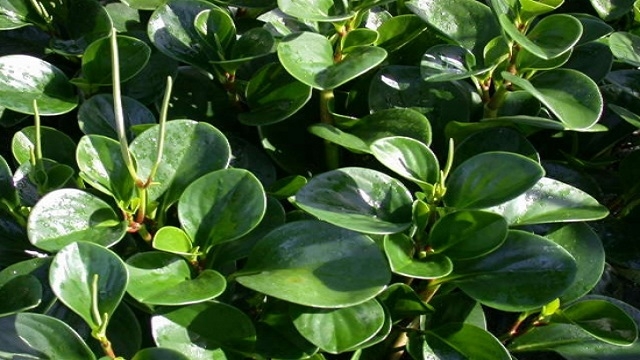
1、养殖环境
(1)土壤:豆瓣绿喜疏松、富含腐殖质、排水性也好的砂质土壤中,不可用粘重的土壤。可用腐叶土混合河沙来配制,也可用泥炭土和珍珠岩。还可在里面加入一些腐熟的肥料。
(2)浇水:植株喜湿润,不耐旱。因此成长期要勤浇水,特别是温度高于二十五度的时候。低于二十五度时,等土壤表面干燥之后再浇。低于十度时,需控水。
(3)湿度:湿润度保持再百分之七十左右。在蒸发量大、空气干燥时,要及时喷水。
(4)温度:喜温暖,最适宜的在二十到三十度。冬季需注意,保证在十度以上才可安全过冬。最低也不可低于五度,否则会受冻。
(5)光照:喜半阴或者是散射光。冬季需提供充足的光照。夏季则需要遮荫。其他季节散射光即可。

2、防治虫害
病害比较少,虫害主要是红蜘蛛。发现之后,数量少可用湿布擦拭叶子,将它们抹掉。如果数量多则喷洒针对性药剂。另外,还要注重增加湿度。

3、修剪
新繁殖的苗,在长到十厘米左右时就需摘心,以增加枝条数量。平时需根据整体造型和长势进行修剪。

0
1
文章
权问薇
2018年05月19日


立体花架1
图片来源:企企爸

制作步骤:
1、准备PVC管打孔
去五金市场买一根110cm左右,直径在7cm左右的PVC管备用。
2、打孔
在pvc管上,间隔20cm的位置打孔。如果想做2面的,就打2个孔,想做4面的,就打4个孔。今天要做的打了4个孔,前后2个孔和左右2个孔不在同一水平面上即可。
3、铁丝弯折
将提前准备好的铁丝弯折成铁环,弯折的直径根据自己家花盆大小来决定,不要用太细的铁丝,否则容易变形。
4、铁环插入pvc管
将弯折好的铁环依次插入PVC管中,伸出来的部分从孔隙穿出弯折下去,然后找铁丝之类的东西扎紧,防止铁环晃动。
5、PVC管固定
将PVC管底部封住,先灌入1/4左右的沙子,插入花盆中,填土后让土干掉,这样更牢固一些。
如果家里有废弃的衣架底座,也可以将PVC管固定在三角衣架的底座上,这样也可以增强固定性,防止管子放上花盆后造成歪斜。
6、PVC管固定
这样,一个立体花架就做好啦!将想要放置的花盆挨个放上去,就大功告成啦!不过隔几天就需要转动一下,防止花卉受光不均匀。
立体花架2
图片来源:阳台有点甜

制作步骤:
1、准备pvc管
有花友家里没有铁丝的,也可以直接用pvc管来制作,先准备一个长度至少为1m的pvc管子。
2、划线锯开
在pvc管上间隔10cm的地方,分别划线,然后用锯子将划线的部分锯开。
3、烤火按压
锯开后,用火稍微烤一下,然后拿另外一根管子,沿着锯开的地方朝下压,让锯开的地方形成凹槽。
4、封住底部
将pvc管的底部彻底密封住,这样一个立体花架就做好啦!
5、填土种菜种花
最后,朝着管子里填土,将花草小苗或青菜小苗种上,就算是完成啦!
除了花花上边介绍的外,其实还有很多自制的花架,既不占地方,养花又好使,赶紧来瞧一瞧吧!



看了花花的介绍,
各位花友心动了嘛?各位花友不如亲自动手试一试吧!
0
3
文章
权问薇
2018年05月19日

给花开个加湿器
坐标北方以及内陆的朋友一定要注意了,在高温无雨天时,保证自家花周围的空气湿润度,否则叶子很容易萎蔫哦~

1、叶面喷水
叶面喷水是最简单的增加空气湿度的方法,只需要一个小小的喷壶即可。
喷洒时注意不要喷到花朵上,另外高温的中午以及午后不要喷水。
2、擦拭叶片
用湿布擦拭叶片也会起到一定的增加湿度的作用,而且水珠不会残留在叶片上。
擦拭的时候可以在水中加一点啤酒或者白醋,这样叶片可以更加青翠油亮。
3、坐盆浇水
不少朋友应该都会在花盆底下放一个托盘,用来盛浇水流出来的水。
在天气比较干燥的时候,可以把托盘里装满水。如果花盆太大,可以直接将花盆放在装水的洗脸盆中。
4、套个塑料袋
如果花已经因为空气干燥萎蔫了,可以浇透水,给叶子喷完水之后,给花套上塑料袋。这样能形成比较湿润的环境,给花“保湿补水”。
但是要注意,每隔半天打开塑料袋,给花透一下气。
给花撑把遮阳伞
高温天气下,不仅要保证空气湿度,做好花的防晒措施也很重要。
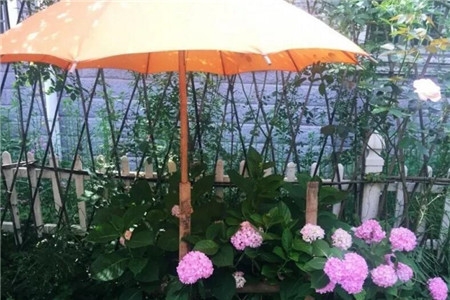
1、防晒网
拉防晒网是花友们最常用的防晒措施,而且几乎所有花卉都适用。
夏天逐步逼近,家里有养护多肉的朋友可以行动起来了,暴晒后的多肉简直是惨不忍睹。
2、遮阳布或遮阳伞
遮阳布和遮阳伞也可以用来给花防晒,不过遮阳布(或伞)的遮光度比较高,介意的朋友可以选择遮阳网。
家里有吊竹梅、绣球花这样喜欢半阴的花卉,可以动手干起来了!
开风扇吹空调
高温闷热的天气,你坐在沙发吃西瓜的时候,可别忘了自己的花也要通风降温啊!
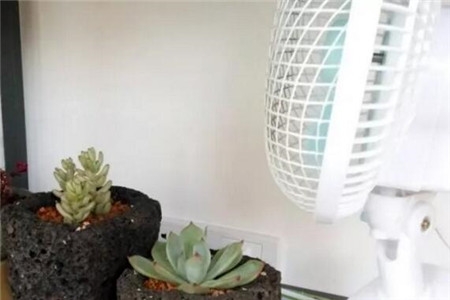
1、开风扇
许多朋友家里都是封闭阳台,容易闷热不透风。这个时候就需要风扇的帮助了。开风扇有助于给环境降温,还可以加强通风。
放在阳台的朋友可以选择太阳能风扇,靠太阳光就能运转,不花钱还能给花降温!
2、吹空调
当然,土豪的花友可以选择给花开空调~
不过,避免将花放在空调通风口直吹,否则,很容易失水。
坐标北方以及内陆的朋友一定要注意了,在高温无雨天时,保证自家花周围的空气湿润度,否则叶子很容易萎蔫哦~

1、叶面喷水
叶面喷水是最简单的增加空气湿度的方法,只需要一个小小的喷壶即可。
喷洒时注意不要喷到花朵上,另外高温的中午以及午后不要喷水。
2、擦拭叶片
用湿布擦拭叶片也会起到一定的增加湿度的作用,而且水珠不会残留在叶片上。
擦拭的时候可以在水中加一点啤酒或者白醋,这样叶片可以更加青翠油亮。
3、坐盆浇水
不少朋友应该都会在花盆底下放一个托盘,用来盛浇水流出来的水。
在天气比较干燥的时候,可以把托盘里装满水。如果花盆太大,可以直接将花盆放在装水的洗脸盆中。
4、套个塑料袋
如果花已经因为空气干燥萎蔫了,可以浇透水,给叶子喷完水之后,给花套上塑料袋。这样能形成比较湿润的环境,给花“保湿补水”。
但是要注意,每隔半天打开塑料袋,给花透一下气。
给花撑把遮阳伞
高温天气下,不仅要保证空气湿度,做好花的防晒措施也很重要。

1、防晒网
拉防晒网是花友们最常用的防晒措施,而且几乎所有花卉都适用。
夏天逐步逼近,家里有养护多肉的朋友可以行动起来了,暴晒后的多肉简直是惨不忍睹。
2、遮阳布或遮阳伞
遮阳布和遮阳伞也可以用来给花防晒,不过遮阳布(或伞)的遮光度比较高,介意的朋友可以选择遮阳网。
家里有吊竹梅、绣球花这样喜欢半阴的花卉,可以动手干起来了!
开风扇吹空调
高温闷热的天气,你坐在沙发吃西瓜的时候,可别忘了自己的花也要通风降温啊!

1、开风扇
许多朋友家里都是封闭阳台,容易闷热不透风。这个时候就需要风扇的帮助了。开风扇有助于给环境降温,还可以加强通风。
放在阳台的朋友可以选择太阳能风扇,靠太阳光就能运转,不花钱还能给花降温!
2、吹空调
当然,土豪的花友可以选择给花开空调~
不过,避免将花放在空调通风口直吹,否则,很容易失水。
0
1
文章
Miss Chen
2018年05月18日

Description: This small vine is slightly woody, forming a low mat of evergreen leaves up to 4" tall and 1' or more across. The stems are mostly light green to light brown and either glabrous or hairy; old stems become brown, smooth, and woody. Pairs of opposite leaves occur along these stems on short petioles up to ¼" long. The leaves are ¼-1" long and similarly across; they are oval to orbicular in shape and smooth to slightly undulate along their margins. The upper leaf surface is glabrous, shiny, and mostly dark green, although it is often nearly white along the central vein and some of the lateral veins. The lower leaf surface is glabrous and more pale.
Pairs of upright flowers occur at the tips of branches or from the axils of leaves. Each flower has a hairy white corolla about ½" long, 4 stamens, and a pistil with single style. Each pair of flowers share the same short-tubular calyx. The corolla is trumpet-shaped with 4 spreading lobes, while the calyx is light green with tiny teeth along its upper rim. There are 4 filiform stigmata per style. There are two types of flowers: those with long stamens and short styles, and those with short stamens and long styles. However, only one type of flower can be found on any individual plant. The blooming period occurs from late spring to mid-summer. The flowers are fragrant. As a result of the fusion of their ovaries, each pair of fertile flowers is replaced by a single berry. The berries are bright red, subgloboid inDistribution Map shape, and up to 1/3" (8 mm.) across. Toward the tip of each berry, there is a pair of shallow dimples. The berry interior is fleshy and rather tasteless, containing up to 8 seeds. The berries can persist throughout the winter and into the spring of the following year. The root system is fibrous. Adventitious fibrous roots can develop when the prostrate stems have contact with moist soil.
Cultivation: The preference is light shade to partial sun, moist to dry-mesic conditions, and an acidic soil containing sand or rocky material (e.g., sandstone). Partridge Berry is not aggressive and it can be difficult to establish. However, it can be cultivated in a partially shaded rock garden where the soil is shallow and competition from other plants is restricted. Flowers and fruits are sparingly produced.
Range & Habitat: The native Partridge Berry occurs occasionally in NE Illinois and southern Illinois, while in the rest of the state it is uncommon or absent. This small vine is distributed across a wide area of eastern North America. Habitats include rocky upland woodlands, sandy savannas, slopes of wooded sand dunes, sandstone cliffs, sandstone ledges along ravines, mossy boulders in wooded ravines, rocky river banks, edges of Red Maple swamps, and bogs. Partridge Berry is found in high quality natural areas.
Faunal Associations: The flowers are cross-pollinated by bumblebees (Hicks et al., 1985). The primary floral reward for these insects is nectar. Apparently very few insects feed on the foliage of Partridge Berry. Some upland gamebirds feed on the fruits of this vine, including such species as the Ruffed Grouse, Bobwhite Quail, Wild Turkey, and the now extinct Passenger Pigeon (Martin et al., 1951/1961; Bennetts, 1900; Schorger, 1955). Mammals that feed on the fruits include the Red Fox, Eastern Skunk, Eastern Chipmunk, White-Footed Mouse, and Woodland Deer Mouse (Martin et al., 1951/1961; Hamilton, 1941). These animals spread the seeds of the berries to new locations.

Photographic Location: A shaded sandstone ledge along a river at the The Potholes in west-central Indiana.
Comments: This is the only species of its genus in North America. Partridge Berry has ornamental foliage, flowers, and berries. It can distinguished from other woody vines by its small size, pairs of showy white flowers, and long-lasting red berries. Another common for this species is Twinberry.
Pairs of upright flowers occur at the tips of branches or from the axils of leaves. Each flower has a hairy white corolla about ½" long, 4 stamens, and a pistil with single style. Each pair of flowers share the same short-tubular calyx. The corolla is trumpet-shaped with 4 spreading lobes, while the calyx is light green with tiny teeth along its upper rim. There are 4 filiform stigmata per style. There are two types of flowers: those with long stamens and short styles, and those with short stamens and long styles. However, only one type of flower can be found on any individual plant. The blooming period occurs from late spring to mid-summer. The flowers are fragrant. As a result of the fusion of their ovaries, each pair of fertile flowers is replaced by a single berry. The berries are bright red, subgloboid inDistribution Map shape, and up to 1/3" (8 mm.) across. Toward the tip of each berry, there is a pair of shallow dimples. The berry interior is fleshy and rather tasteless, containing up to 8 seeds. The berries can persist throughout the winter and into the spring of the following year. The root system is fibrous. Adventitious fibrous roots can develop when the prostrate stems have contact with moist soil.
Cultivation: The preference is light shade to partial sun, moist to dry-mesic conditions, and an acidic soil containing sand or rocky material (e.g., sandstone). Partridge Berry is not aggressive and it can be difficult to establish. However, it can be cultivated in a partially shaded rock garden where the soil is shallow and competition from other plants is restricted. Flowers and fruits are sparingly produced.
Range & Habitat: The native Partridge Berry occurs occasionally in NE Illinois and southern Illinois, while in the rest of the state it is uncommon or absent. This small vine is distributed across a wide area of eastern North America. Habitats include rocky upland woodlands, sandy savannas, slopes of wooded sand dunes, sandstone cliffs, sandstone ledges along ravines, mossy boulders in wooded ravines, rocky river banks, edges of Red Maple swamps, and bogs. Partridge Berry is found in high quality natural areas.
Faunal Associations: The flowers are cross-pollinated by bumblebees (Hicks et al., 1985). The primary floral reward for these insects is nectar. Apparently very few insects feed on the foliage of Partridge Berry. Some upland gamebirds feed on the fruits of this vine, including such species as the Ruffed Grouse, Bobwhite Quail, Wild Turkey, and the now extinct Passenger Pigeon (Martin et al., 1951/1961; Bennetts, 1900; Schorger, 1955). Mammals that feed on the fruits include the Red Fox, Eastern Skunk, Eastern Chipmunk, White-Footed Mouse, and Woodland Deer Mouse (Martin et al., 1951/1961; Hamilton, 1941). These animals spread the seeds of the berries to new locations.

Photographic Location: A shaded sandstone ledge along a river at the The Potholes in west-central Indiana.
Comments: This is the only species of its genus in North America. Partridge Berry has ornamental foliage, flowers, and berries. It can distinguished from other woody vines by its small size, pairs of showy white flowers, and long-lasting red berries. Another common for this species is Twinberry.
0
0
文章
Miss Chen
2018年05月18日

Description: This herbaceous perennial plant is 1–2½' tall, branching occasionally. The central stem is terete, hairless, and usually light green (less often purplish green or purple). The alternate leaves are up to 7" long and 3½" across. They are light green or greyish green and hairless with a soft floppy texture. The leaves are ovate-oval or ovate-oblong in shape, smooth (entire) along their margins, and pinnately veined. The leaves usually taper to winged petioles up to 2½" long, although some of the upper leaves are sessile. The upper stems terminate in nodding cymes of flowers. Individual flowers are about ¾–1¼" in length.
The corolla of each flower is tubular at its base, but it is more bell-shaped (campanulate) toward its outer rim, where there are 5 shallow lobes that are barely discernible. Inserted within the corolla, there are 5 white stamens with light brown anthers and a white style that is long and slender. The small greyish green calyx of each flower is about ¼" (6 mm.) long; it is divided into 5 elliptic teeth. The flower buds are pink, bluish pink, or purple, while the corollas of mature flowers are light blue (rarely white or pink). The pedicels of the flowers are greyish green to purple, terete, and up to ¼" (6 mm.) long. The blooming period occurs from mid- to late spring, lasting about 3 weeks. Afterwards, the flowers are replaced by 4-lobed fruits (schizocarps), which contain the nutlets (4 nutlets per flower). The small nutlets are dark brown, ovoid, and flattened on one side; their surfaces are minutely wrinkled or pitted. The root system consists of a taproot. This plant often forms colonies.
Cultivation: The preference is light shade to partial sun in moist areas with rich loamy soil. This plant develops very quickly during the spring after danger of hard frost has passed. Its foliage dies down by mid-summer.

Range & Habitat: Virginia Bluebells is a fairly common plant that occurs in most counties of Illinois (see Distribution Map), where it is native. Habitats include floodplain woodlands, bottomland woodlands, mesic woodlands, and wooded bluffs. Sometimes this wildflower forms sizable colonies in semi-shaded floodplain areas along rivers or streams, where it often competes with Wood Nettle (Laportea canadensis). It is also cultivated in flower gardens.
Faunal Associations: The flowers are cross-pollinated by long-tongued bees primarily, including honeybees, bumblebees, Anthophorid bees (Anthophora spp., Synhalonia spp.), and mason bees (Osmia spp.); these insects obtain nectar and/or collect pollen. Other visitors of the flowers include the Giant Bee Fly (Bombylius major), butterflies, skippers, and Sphinx moths, including a hummingbird moth (Hemaris thysbe). This group of visitors suck nectar from the flowers. Halictid bees and Syrphid flies sometimes visit the flowers, but they are too small in size to be effective pollinators. In some areas, the Ruby-Throated Hummingbird has been observed to visit the flowers. White-Tailed Deer browse on the foliage occasionally during the spring. When this plant forms large colonies, it provides protective cover for many kinds of wildlife during the spring.

Photographic Location: A moist wooded area of Busey Woods in Urbana, Illinois.
Comments: It is easy to see why Virginia Bluebells (Mertensia virginica) is a favorite woodland wildflower. The pastel colors of the flowers and foliage are soft and soothing. There are other Mertensia spp. in the United States with a similar appearance, but they occur north or west of Illinois. They usually have smaller flowers and/or pubescent foliage.
The corolla of each flower is tubular at its base, but it is more bell-shaped (campanulate) toward its outer rim, where there are 5 shallow lobes that are barely discernible. Inserted within the corolla, there are 5 white stamens with light brown anthers and a white style that is long and slender. The small greyish green calyx of each flower is about ¼" (6 mm.) long; it is divided into 5 elliptic teeth. The flower buds are pink, bluish pink, or purple, while the corollas of mature flowers are light blue (rarely white or pink). The pedicels of the flowers are greyish green to purple, terete, and up to ¼" (6 mm.) long. The blooming period occurs from mid- to late spring, lasting about 3 weeks. Afterwards, the flowers are replaced by 4-lobed fruits (schizocarps), which contain the nutlets (4 nutlets per flower). The small nutlets are dark brown, ovoid, and flattened on one side; their surfaces are minutely wrinkled or pitted. The root system consists of a taproot. This plant often forms colonies.
Cultivation: The preference is light shade to partial sun in moist areas with rich loamy soil. This plant develops very quickly during the spring after danger of hard frost has passed. Its foliage dies down by mid-summer.

Range & Habitat: Virginia Bluebells is a fairly common plant that occurs in most counties of Illinois (see Distribution Map), where it is native. Habitats include floodplain woodlands, bottomland woodlands, mesic woodlands, and wooded bluffs. Sometimes this wildflower forms sizable colonies in semi-shaded floodplain areas along rivers or streams, where it often competes with Wood Nettle (Laportea canadensis). It is also cultivated in flower gardens.
Faunal Associations: The flowers are cross-pollinated by long-tongued bees primarily, including honeybees, bumblebees, Anthophorid bees (Anthophora spp., Synhalonia spp.), and mason bees (Osmia spp.); these insects obtain nectar and/or collect pollen. Other visitors of the flowers include the Giant Bee Fly (Bombylius major), butterflies, skippers, and Sphinx moths, including a hummingbird moth (Hemaris thysbe). This group of visitors suck nectar from the flowers. Halictid bees and Syrphid flies sometimes visit the flowers, but they are too small in size to be effective pollinators. In some areas, the Ruby-Throated Hummingbird has been observed to visit the flowers. White-Tailed Deer browse on the foliage occasionally during the spring. When this plant forms large colonies, it provides protective cover for many kinds of wildlife during the spring.

Photographic Location: A moist wooded area of Busey Woods in Urbana, Illinois.
Comments: It is easy to see why Virginia Bluebells (Mertensia virginica) is a favorite woodland wildflower. The pastel colors of the flowers and foliage are soft and soothing. There are other Mertensia spp. in the United States with a similar appearance, but they occur north or west of Illinois. They usually have smaller flowers and/or pubescent foliage.
0
0
文章
Miss Chen
2018年05月18日

Description: This perennial wildflower is 1-2½' tall, consisting of an erect unbranched stem and 1-2 whorls of leaves. Plants without flowers produce only a single whorl of leaves, while flowering plants produce 2 whorls of leaves. The central stem is medium green, terete, and woolly-pubescent to glabrous; it becomes more glabrous with age. In a flowering plant, the lower whorl of leaves occurs near the middle of the central stem; this whorl has 5-10 leaves that are 2½-5" long and ½-2" across. The upper whorl of leaves occurs underneath the inflorescence; this whorl has 3-5 leaves that are 2-4" long and ½-2" across. All of these leaves are elliptic to ovate in shape, smooth along their margins, and sessile. The upper leaf surface is medium green and glabrous, while the lower surface is pale green. Individual leaves have 3-5 parallel primary veins and a fine network of secondary veins.
The inflorescence consists of a sessile umbel of 3-9 flowers on pedicels about 1" long. These flowers are held either a little above or below the leaves when they are in bloom. Individual flowers are about 2/3" (16 mm.) across, consisting of 6 yellowish green tepals, 6 stamens, a 3-celled ovary, and 3 reddish purple to brown stigmata. The tepals are lanceolate in shape and recurved. The stigmata are large in size and recurved, spanning the width of each flower. The pedicels are light green and glabrous. The blooming period occurs from late spring to early summer, lasting about 1 month. Afterwards, the pedicels become more erect, holding the developing berries above the upper whorl of leaves. At maturity, these berries are dark purple, globoid, and about 1/4" to 1/3" (6-8 mm.) across. Each berry contains several seeds. The root system consists of a thick rhizome with fibrous roots. Small colonies of plants can develop from the rhizomes.
Cultivation: The preference is dappled sunlight to medium shade, moist to mesic conditions, and soil containing loam or sandy loam with decaying organic matter.

Range & Habitat: The native Indian Cucumber-Root is located in two counties of NE Illinois, where it is rare and state-listed as 'endangered' (see Distribution Map). Illinois lies along the western range-limit of this species. Habitats consist of rich mesic woodlands, edges of swamps, forested bogs, and at the bases of wooded dunes. In mesic areas, this wildflower is typically located in beech-maple woodlands, while in more swampy areas it is found near Red Maple, Black Ash, and other deciduous trees that prefer moist areas.
Faunal Associations: Very little is known about floral-faunal relationships for this species. Sometimes, such small rodents as the White-Footed Mouse and Woodland Deer Mouse eat the seeds and berries (Hamilton, 1941).

Photographic Location: The base of a wooded sand dune near the edge of a swamp at the Indiana Dunes National Lakeshore in NW Indiana.
Comments: The common name refers to the flavor of the rhizome, which is said to resemble the flavor of cucumbers. Because of the oversized stigmata, the flowers of Indian Cucumber-Root have an odd appearance. Non-flowering plants with a single whorl of leaves superficially resemble an orchid, Isotria verticillata (Large Whorled Pogonia). However, this orchid has been found only in southern Illinois, where Indian Cucumber-Root does not occur. In areas where their ranges overlap outside of the state, these two species can be distinguished by the differing patterns of their secondary veins.
The inflorescence consists of a sessile umbel of 3-9 flowers on pedicels about 1" long. These flowers are held either a little above or below the leaves when they are in bloom. Individual flowers are about 2/3" (16 mm.) across, consisting of 6 yellowish green tepals, 6 stamens, a 3-celled ovary, and 3 reddish purple to brown stigmata. The tepals are lanceolate in shape and recurved. The stigmata are large in size and recurved, spanning the width of each flower. The pedicels are light green and glabrous. The blooming period occurs from late spring to early summer, lasting about 1 month. Afterwards, the pedicels become more erect, holding the developing berries above the upper whorl of leaves. At maturity, these berries are dark purple, globoid, and about 1/4" to 1/3" (6-8 mm.) across. Each berry contains several seeds. The root system consists of a thick rhizome with fibrous roots. Small colonies of plants can develop from the rhizomes.
Cultivation: The preference is dappled sunlight to medium shade, moist to mesic conditions, and soil containing loam or sandy loam with decaying organic matter.

Range & Habitat: The native Indian Cucumber-Root is located in two counties of NE Illinois, where it is rare and state-listed as 'endangered' (see Distribution Map). Illinois lies along the western range-limit of this species. Habitats consist of rich mesic woodlands, edges of swamps, forested bogs, and at the bases of wooded dunes. In mesic areas, this wildflower is typically located in beech-maple woodlands, while in more swampy areas it is found near Red Maple, Black Ash, and other deciduous trees that prefer moist areas.
Faunal Associations: Very little is known about floral-faunal relationships for this species. Sometimes, such small rodents as the White-Footed Mouse and Woodland Deer Mouse eat the seeds and berries (Hamilton, 1941).

Photographic Location: The base of a wooded sand dune near the edge of a swamp at the Indiana Dunes National Lakeshore in NW Indiana.
Comments: The common name refers to the flavor of the rhizome, which is said to resemble the flavor of cucumbers. Because of the oversized stigmata, the flowers of Indian Cucumber-Root have an odd appearance. Non-flowering plants with a single whorl of leaves superficially resemble an orchid, Isotria verticillata (Large Whorled Pogonia). However, this orchid has been found only in southern Illinois, where Indian Cucumber-Root does not occur. In areas where their ranges overlap outside of the state, these two species can be distinguished by the differing patterns of their secondary veins.
0
0
文章
权问薇
2018年05月18日


1.养殖环境
(1)土壤:养铁线莲的土壤要求排水性好、肥沃等,而且根据植株对酸碱度的要求,需碱性土。可用椰糠、泥炭、珍珠岩、按三比一比一比例来配土,里面也可加入树皮、火山石等大颗粒物质。
(2)浇水:它较耐旱,但怕涝。在成长期,只需保持土壤湿润就可以,不要积水。夏季次数可多一些,三天一次;冬季控水,大约半个月一次。春、秋浇水可随意,土壤干了就浇。
(3)光照:它非常喜光,因此全光照养护较好,直射光也没关系。不过夏季会遇到特别强的直射光,此时需遮光。
(4)施肥:它对肥料需求量不多,只在成长期使用一些液肥就可满足要求,每半个月一次。

2.防治病害
枯萎病比较多发,要及时处理。枯萎发生后,立即减少浇水。然后需打顶,之后剪叶。最后要用多菌灵灌根消毒,并放在阴凉的地方养护,等它发出新芽。

3.修剪
在花期以后,需修剪一次,同时可将一些枝条剪下扦插。秋冬季节时,因为植株即将进入休眠,因此需修剪一次以辅助过冬。
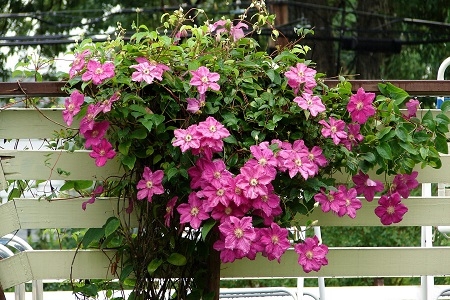
5
6
文章
巴黎铁塔
2018年05月18日
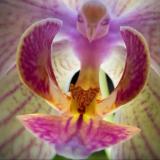
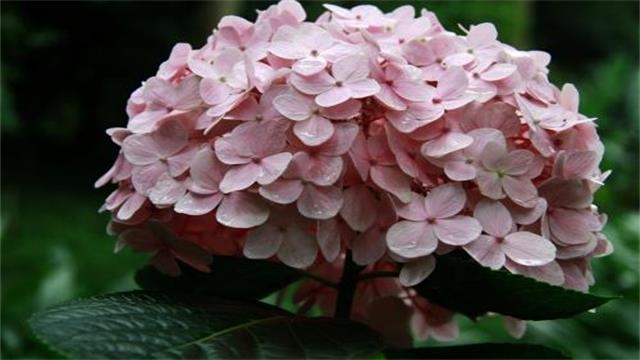
1.光照适宜
它能够忍耐阴凉,害怕烈日直射,在散射的光照下可以正常生长。日光太烈或不够都可能造成叶片发黄。夏天叶子变黄变白是因为被太阳光灼伤、阳光太烈造成的,可以将其转移到遮阴有风的地方,避免太阳光直接照射。若阳光不够导致叶片变黄,可以延长照射阳光的时间。

2.合理浇水
它喜欢水多的地方,但是也害怕水过多和干旱。如果水太多,叶子会渐渐变黄、失去光泽,严重会导致脱落,发生这种情况就应该停止浇水,并且疏松土壤将土壤晾干,等土壤干透之后再加水。如果水太少,盆里的土太干,发生这种情况应该先加少量的水,等30分钟后再浇一遍透水,并向枝叶洒清水。
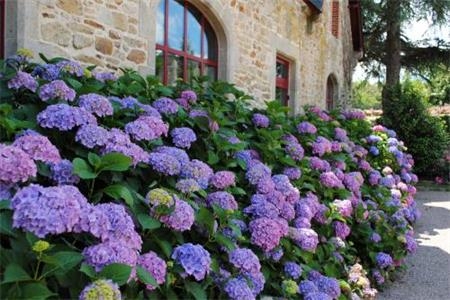
3.合理施肥
在加肥过程中,如果增加的肥料过多,易造成“烧根”现象,使枝叶变黄并脱落,发生这种情况应该停止加肥,并加大浇水量,使营养物质从底部的小孔流出,然后用水冲洗土,并换进新的土。若长期没有更换土壤加营养物质,尤其是缺氮,养分供应不够,叶子也会失去绿色变成黄色,出现这种情况应该及时换成新的含氮、疏松的土,并每10天加一次营养物质。
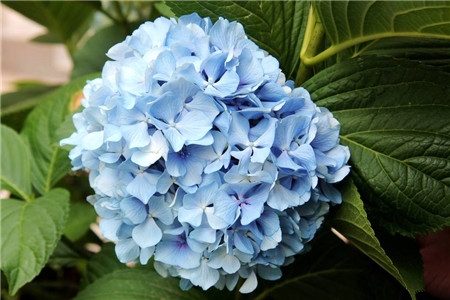
0
0
文章
巴黎铁塔
2018年05月18日


1.保证泥土偏酸性
它喜欢生长在疏松、富含营养的泥土中,如果种在偏碱性的泥土中,会导致它的叶子慢慢变成黄色。出现这种情况时应及时将植物移入偏酸性的泥土中,或定时往泥土中喷洒FeSO4溶液。
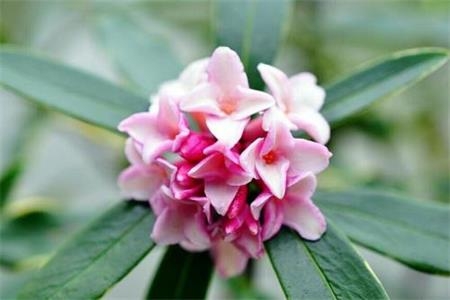
2.合理浇水
它喜欢阴凉的地方并且讨厌水过多,因此要控制水量,泥土不发干就不必浇水,泥土发干就一定要把水浇透,不能浇水却不浇透,使得上面的土是湿的,但是下面土却是干的。如果水过多,就可能因为泥土太湿导致根茎腐坏。出现这种情况时应该将植物及时从盆中拿出,清洗干净根茎,再重新栽入土中,并放置阴凉有风的位置。
3.勤肥少加
它喜欢肥料,最好的是腐熟的有机肥,但每次肥料的使用量不能太多。
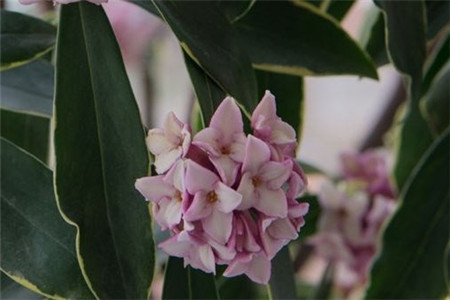
4.散光充足
它害怕夏天过高的温度和灼热的太阳光,夏天应该将其放在通风遮阴的花架上,也可以放在不被太阳直接照射的地方,九月下旬之后就可以见全光了。
5.保持温度
它抵抗寒冷的能力比较差,应该在霜降前移入屋里,并将温度保持在5℃以上,这才能确保其正常生长。

0
0






